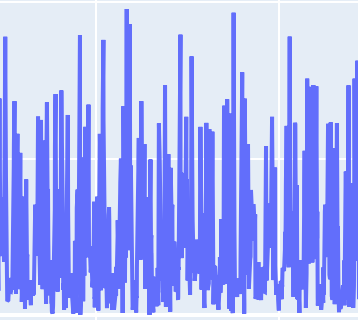Data-centric Energy Modelling
Introduction
Increasingly, large quantities of data are being generated from monitoring of buildings and structures. These data potentially offer insights into the ways in which our buildings are operated and can be made more efficient, but as yet the potential benefits are largely untapped. In this research theme we are aiming to develop methods for making use of new and extensive data streams.
Challenges
Real data are typically messy and incomplete, and preparation of the data is a necessary precursor to any form of analysis. The challenges of working with monitored data include sourcing the data, identification of errors and anomalies, and cleaning and structuring the data so it can be used. For a single building this may not be too difficult, but when comparing across buildings or a building stock, further challenges arise owing to different monitoring strategies for the individual buildings. The sheer quantity of data available can also present logistical challenges.
New methods are required to interpret data in ways which increase our understanding of building energy performance. To date, while there has been an increasing focus on developing the technology to monitor all aspects of building performance, there has been little emphasis placed on the interpretation of those data. While control systems may use certain data for immediate operational actions (such as window operation as a result of high CO2 levels), there has been limited research into use of the data for improvement of building design and operation in the longer term.
Data-centric energy modelling projects
We are keen to develop tools which allow us to predict building energy demand in ways which make best use of available monitored data.
Functional Data Analysis
A Functional Data Analysis approach for generation of stochastic internal loads for input into building energy simulation
Physics-based Domain Adaptation
Leveraging mechanistic models to improve building energy forecasting via Physics-based Domain Adaptation.

